How to choose a fresh, ripe and sweet melon: Kolkhoz Woman, Torpedo and Gulyabi
Watermelons and melons are indispensable attributes of the outgoing summer, which their premium qualities raise high on the pedestal of taste and aroma. Whatever one may say, but they always cause a storm of positive or negative emotions in direct proportion to the level of freshness, degree of maturity, as well as richness of taste. Our article is devoted to how to correctly determine the choice of a first-class tasty and fragrant melon.
By the way! About, how to choose a delicious and ripe watermelon written in detail in this article.
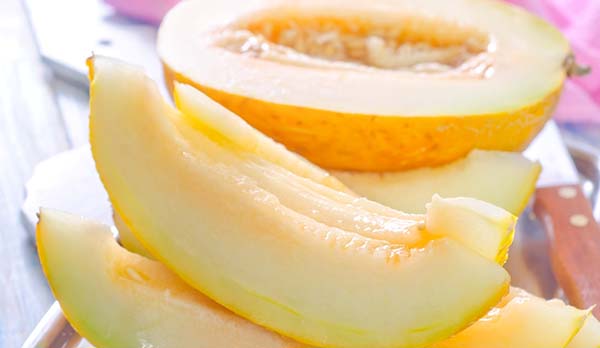
Content
What melon consists of and its beneficial properties
As a rule, melon consists of 90-95% water and 5-10% of a number of elements (minerals and vitamins), namely: iron, zinc, potassium, calcium, sodium, magnesium, phosphorus, vitamins of groups A, B A, C, E, P, glucose, folic acid and many others.
Average calorie content of the product: 33-40 kcal per 100 grams.
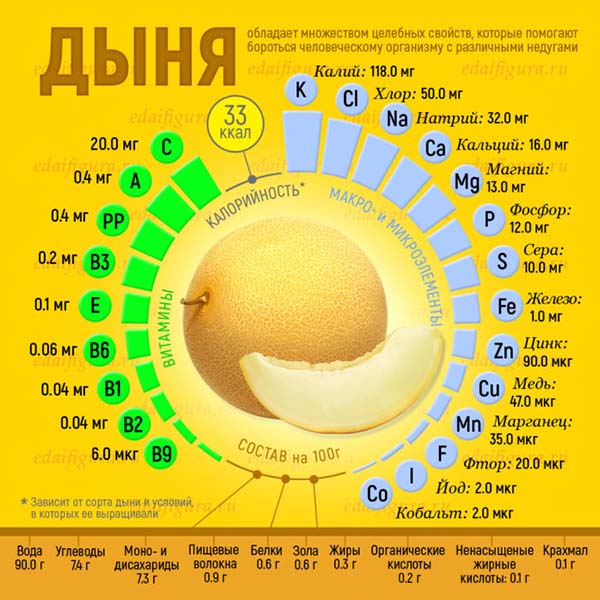
It is an indisputable fact that melon has a number of useful properties that have a positive effect on the human body:
- treats depression;
- increases the tone of the body;
- relieves headache;
- improves skin color;
- raises immunity;
- increases hemoglobin.
However, the so-called false berry also has contraindications, namely, it is not recommended to use it:
- diabetics;
- people who are overweight;
- with ulcers of the stomach and duodenum;
- with other bowel diseases.
By the way! Melon is not a fruit or a berry, but a real vegetable, because it belongs to the pumpkin family, and the species of the genus is a cucumber, that is, it is a melon crop.
Melon varieties
The most popular and most common varieties of melons you can find on sale are Kolkhoz Woman and Torpedo.
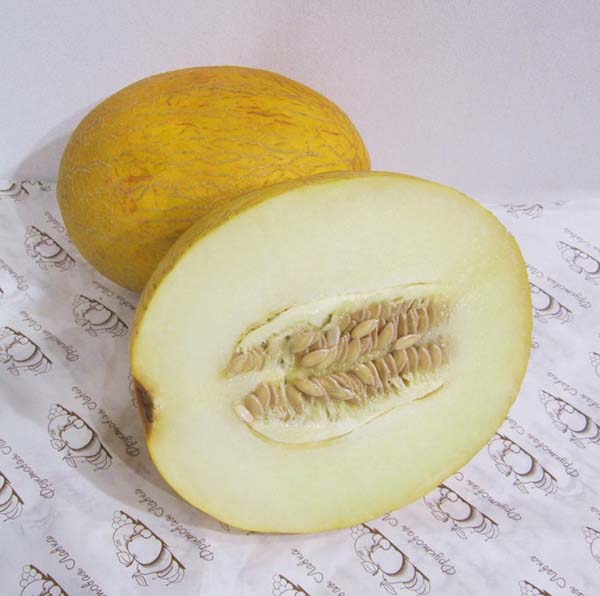
Collective farmerusually grown in the Volga region and start selling from the beginning of August, Torpedo - most often in Uzbekistan, and sales start at the end of August.

By the way! Recently, the Uzbek melon variety has gained relatively high recognition. Walking, which is very similar in appearance to the Torpedo.

Also well-known varieties are:
- Cantaloupe or Muscat (Thailand, Morocco, all year round);
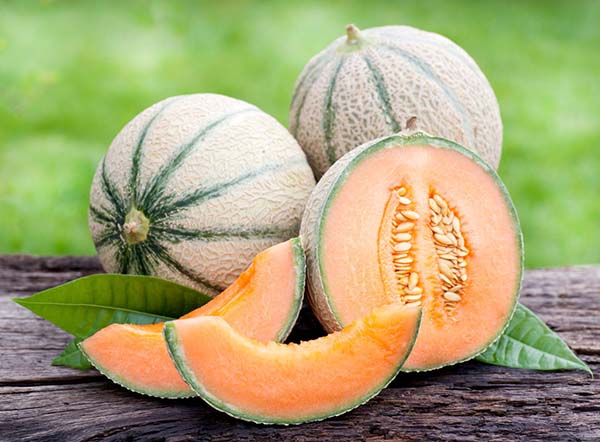
- Honey (Mediterranean, Morocco, from the end of July);
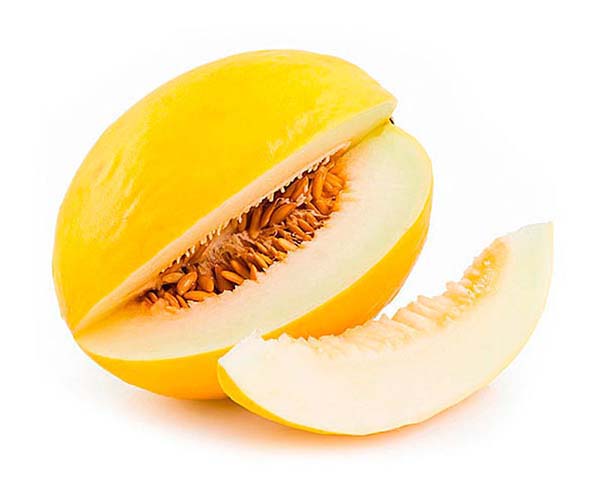
- Avocado or Green (Thailand, from mid-July).

Here is an infographic on the differences and peculiarities of choosing melon varieties:
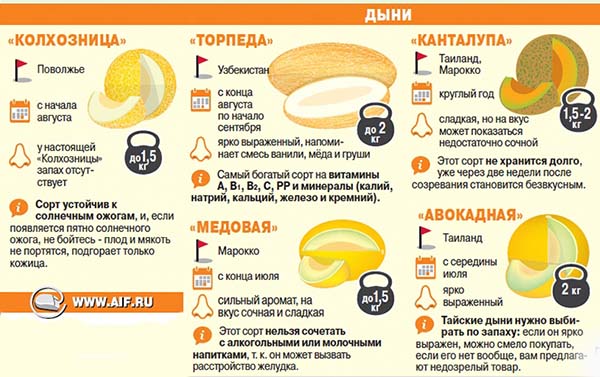
How to choose a ripe and tasty melon: selection criteria
In fact, choosing a juicy and sweet melon is much easier than choosing a watermelon.
It is not so difficult to determine that it is ripe, namely: first you need to evaluate its surface, and only then pick it up - touch and smell.
Important! At first carefully inspect the appearance of the melon; it should not have black spots, deep cracks and dents. As you know, in a sweet environment, when it is very hot, microbes multiply rapidly.
You can determine that the melon is ripe by its external characteristics:
- Better to choose medium in size melons (large, but not heavy). This is because there is a fairly high probability that small melons, in fact, just not ripe or are not getting enough nutrients. Large specimens, on the contrary, there were overfed with various fruit growth stimulants.

- Colour melons should be light yellow... If she has a greenish skin tone, then this suggests that she is most likely unripe. What if the color is too bright, then it is possible that such a melon may contain increased amount of nitrates (this applies only to the Torpedo variety). It has already been noted more than once that the Kolkhoznitsa variety may experience sunburn on the surface, but this does not in any way affect the fruit and pulp itself, only the skin burns.
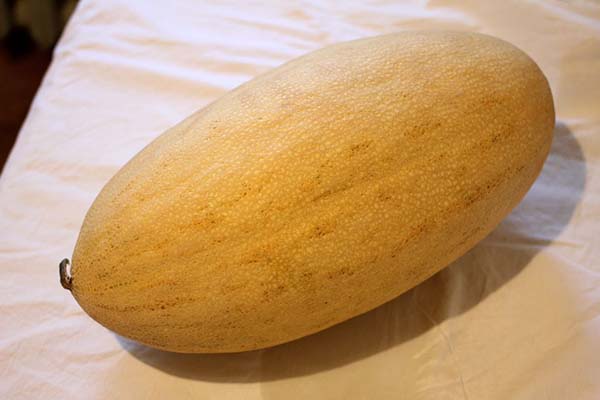
- Look at her tail, it should be a little plump and drydown to to the bottom... If it is green, then it is not ripe, and if it is too dry, it is overripe or it has been stored for too long.
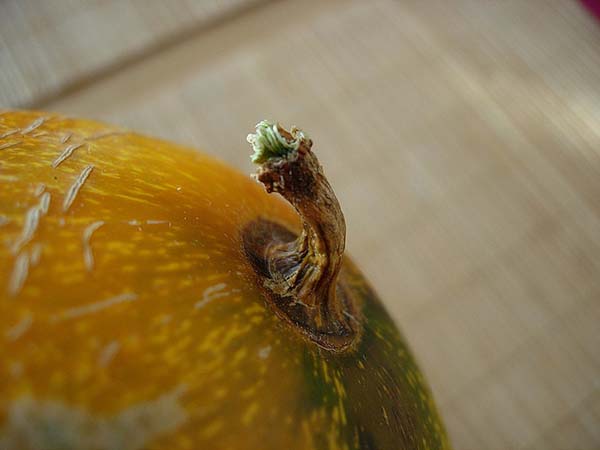
- Ripe melon on the skin should be visible orange streaks, if they are green, then it is not yet ripe (this is more related to the Torpedo). The collective farmer must have large and dense mesh.
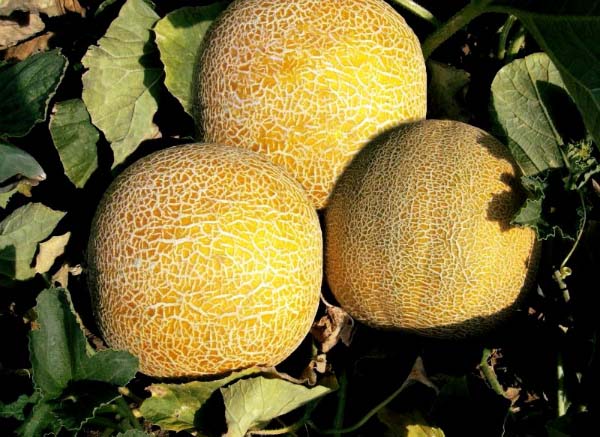
Now take the dessert vegetable in your hands and use the following criteria for evaluating the ripeness and freshness of the melon:
- First, you need it smell... If you feel sweet aroma (vanilla, pineapple, pear, honey), it means that it is ripe (for example, the watermelon does not smell). A missing or herbaceous odor is a clear sign that she's not ready yet. The collective farmer's smell may not be as bright (or it may not be at all) as that of the Torpedo.

- Secondly, clap vegetable. Sound it should be deaf (in a watermelon, on the contrary, sonorous). If you hear "watery" sounds, then the vegetable is not ready yet.

- Thirdly, push the crust... Melon may smell good and be quite ripe, but you still need to understand and determine that it is not overripe. If she is like "Spring" when pressed, will be elastic (your finger should not leave any dents, even small ones), which means that everything is in order - the vegetable is fresh.
- pay attention to spout fruit (this is where the flower used to be). There is such a misconception that the larger the trace of the flower, the tastier it will be, since this is a girl. In fact, all melons are girls, since only a female flower can produce a fruit (male flowers are needed only for pollination). However, it should touch this nose, it should be slightly soft and slightly springy... If it is hard, then the melon is not ripe, too soft - it is overripe or has been stored for too long.
- Scrape the surface discreetly fingernail. A ripe specimen skin must be tender and correspondingly,easy to scrape off, and under it a greenish layer should be visible (mostly related to the Torpedo).
Video: how to choose a ripe melon by smell, sound and pressure
Naturally, there are some more differences that should be taken into account when choosing a Kolkhoz Woman and a Torpedo melon:
- Torpedo better to choose larger and heavier, besides, it must have pronounced elongated shape and pale yellow.
- Not necessaryso that Collective farmer was largequite fineth maybe melon diameter Total 10 centimeters.
In order not to forget all the important criteria for choosing a ripe melon, save the following infographic somewhere:
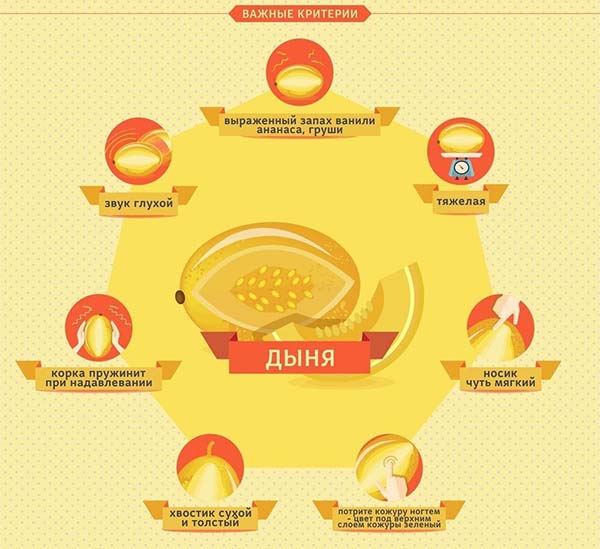
Where to buy melons
The question is quite complex and ambiguous, with exceptions.
As a rule, unripe melons are sold in supermarkets because they are picked early so they can be stored longer. There are frequent cases when, on the contrary, “old” overripe goods are put up for sale. Also, do not take already cut and packed copies (but a cut pumpkin is quite possible).

For a long time, people went to the market for fresh and delicious vegetables - one of the best places to buy melons. But nowadays they are often brought directly to residential areas.

In any case, if you understand the principle of choosing a ripe and tasty melon, you can pick up a high-quality and sweet specimen anywhere.
Important! All melons and gourds easily absorb pollutants from the air.
That is why, under no circumstances is it advisable to buy melons that are sold near busy roads, no matter how convenient it is. However, it happens quite often that melon growers stand not far from villages or summer cottages, where the air is still not so polluted, and the terms of sale are more or less met.

In order for the melon to fully meet all your hopes, you need to make the right choice of dessert vegetable. To do this, the focus of your attention should be on the variety, excellent appearance, divine smell, appropriate sound and a few other important criteria. In addition, the place of sale should not cause any complaints. And now go ahead for a tasty treat!
Video: how to choose a ripe, sweet and nitrate-free melon

